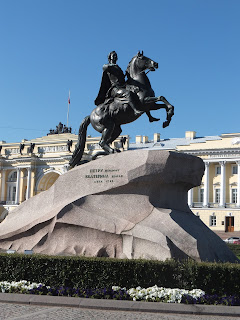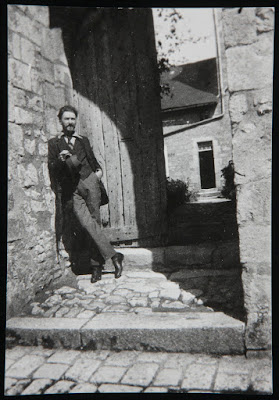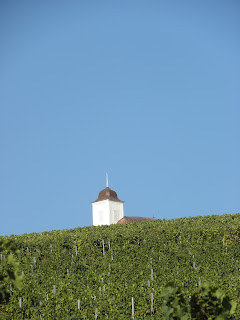Luzhitsy: A Travel Essay
The Votes are the smallest ethnic minority in Europe. They speak a Finnic language and live in two villages in Russia to the west of St Petersburg. Two years ago, in August 2015, I went to visit them. This is my account of the trip.
The article has been published by East-West Review (as part of From St Petersburg to Pskov by way of Luzhitsy) in its Spring/Summer 2018 issue (Vol 17, no 1; ISSUE 47) and by Hungarian Review in its May 2018 issue (Volume IX, No. 3).
The article has been published by East-West Review (as part of From St Petersburg to Pskov by way of Luzhitsy) in its Spring/Summer 2018 issue (Vol 17, no 1; ISSUE 47) and by Hungarian Review in its May 2018 issue (Volume IX, No. 3).
Peter the Great
Between St Isaac's Cathedral and the Neva, stands St Petersburg Sweden
I stood by the statue and watched people, mostly foreign
tourists, come to take a photograph; perhaps a selfie with St Petersburg
The statue derives its popular name - The Bronze Horseman -
from what is possibly Alexander Pushkin's best-known narrative poem. The poem's
protagonist, Yevgeni - an ordinary, hard-working inhabitant of St
Petersburg - is driven mad when he finds that a flood that has
destroyed much of St Petersburg
When Peter the Great founded St Petersburg Russia - of a Russia
that looked West rather than East, outward rather than inward - was built among
desolate northern marshlands at the mouth of the great Neva River St
Petersburg
Where desolate breakers rolled, stood he,
immersed in thought and prophecy;
and looked afar. A spacious river
flowed before him; hurriedly
a poor boat strove in lone endeavour.
Upon the mossy, swampy shore
huts showed up blackly here and there,
the shelters of the wretched Finn;
and forest that no light came near,
where, through mist and gloom, a din
reverberated.
(as translated by Stanley Mitchell)
It is estimated that somewhere between 30,000 and 100,000
serfs died in the making of Peter's dream - slaves, forced to work here in
these inhospitable swamps, that nobody really counted when they died. It is a
city built on their bones.
Glory, city of Peter, stay
unyielding like the Russian land,
and let the elements at bay
submit to our pacific hand.
Let Finnish waves no more
remember
their enmity and their arrest,
not vain vindictiveness encumber
Peter the Great's eternal rest!
(as translated by Stanley
Mitchell)
Remembering the St Petersburg flood of 7 November 1824
Before the St Petersburg Dam was completed in 2011, floods
were a constant and regular threat to the city as the waters rose to reclaim
the city built on their marshlands. On the house at the corner of Stolyarny Lane
and Grazhdanskaya Street- where Dostoyevsky had Raskolnikov, his haunted protagonist
in Crime and Punishment, live - there
are plaques set in the wall remembering, in German and in Russian, the level the
floods reached on 7 November 1824. This was the worst of the many floods
recorded since St Petersburg
The sea-winds blowing up the gulf
had checked the Neva 's
flow; it reared,
forced backwards, in a mighty
huff,
and all the islands
disappeared...
Soon the weather grew still
worse,
the angry Neva
roared and swelled
and like a cauldron seethed and
swirled;
as if a captive beast let loose
fell on the city...
(as translated by Antony Wood)
But how accurate is the myth that the lands around the
estuary of the Neva were uninhabited before
1703? Pushkin, in The Bronze Horseman,
mentions in passing the "wretched
Finn" whose "huts showed up blackly here and there"; and Anna
Akhmatova, looking out of her window onto the wooded courtyard behind what had
once been the Sheremetev Palace, discerned in the great age of the trees she
saw there the memory of a Swedish farmstead.
At the mouth of the Neva, which had long been a strategic
point in the centuries-long struggle between Russia
and Sweden for control of
the eastern Baltic , Sweden Neva
and out to sea. Its site now has all but disappeared under an industrial
district of St Petersburg; but from 1642 to 1656, Nyen was the administrative
centre of the Swedish province
of Ingria
Sweden controlled Ingria, what is now still the
Leningradskaya Oblast, the region around St Petersburg, from 1583 to 1595 and
again from 1617 until 1721 when it was formally ceded to Russia - though parts of
Ingria, including Nyen and the land where St Petersburg was founded in 1703,
had been under de facto Russian control since the early years of the Great
Northern War. In Swedish times another name for the province of Ingria Russia
During the years of Swedish control, Lutheran immigrants from
Finland , then the eastern
half of the Swedish
Kingdom Lake
Ladoga and the confines of Karelia in the east, was divided into settled Lutheran
parishes. Even as late as 1917, and despite two centuries of Ingrian Finns
emigrating back to Finland
The people who lived in Ingria before the in-coming Finns
spoke Russian, Izhorian, Vote and Veps. The latter three languages are all from
the same branch of the Uralic group of languages as are Finnish and Estonian
and place names derived from the aboriginal Finnic languages stretch deep into Russia Lake Ilmen Rome and Wittenberg ; it had reached the native Votes, Izhorians and
Veps - as it had their Orthodox Russians neighbours - through Byzantium
and Kiev
The southern and eastern shores of the Gulf
of Finland had long been a meeting point of, and an area of
conflict between, East and West. The Novgorod
Republic Sweden Russia 's greatest hero, won his famous battle
against Sweden (and the
honorific surname by which he is universally known today) on the Neva in 1240.
The Neva was strategically important then as the northern end
of the river route between the Baltic and Byzantium Sweden
a few centuries earlier, went up the broad Neva, past where St
Petersburg now stands, to Lake Ladoga
The Volkov River as it flows out of Lake Ilmen past the walls of Novgorod
According the Primary
Chronicle the people of the area
around Novgorod and Lake Ilmen - Votes, Veps, Ilmen Slavs and others (different
versions mention different names) - in 862,
invited Rurik to come and rule over them. Facts about Rurik are lost in legend.
Some say that Rurik came from Sweden ,
possibly from the area to the north east of present-day Stockholm Russia Russia Gulf of Finland . When Muscovy conquered
the Republic of Novgorod
The Ilmen (or Novgorod) Slavs - who had arrived in the area not
long before 862 - went on to become part of the great ethnic East Slavic/ Russian
people group, although with a distinct dialect (the Old Novgorod dialect) that
might betray different origins at the time of the Great Migrations. But what of
the original Finnic tribes, the Votes and the Veps? Many, certainly, became
absorbed over time in the Russian identity as it became dominant in the region.
Yet to this day there are still distinct communities of Veps and Votes in Russia Russian
Republic of Karelia .
In the 2002 census, there were 8,240 Veps in Russia Luga
River , some 150 km west of St Petersburg Europe .
*
As we looked at our maps, it seemed that the most sensible and
pleasant route to get from St
Petersburg Chernobyl
Fountains at Peterhof
So on a bright August morning - two days after the Orthodox
Feast of the Transfiguration of Our Lord, when the custom is to bless the newly
harvested apples - Maria, Pauline, Fyodor and I set off for Luzhitsy out the Tallinn Road
The centre of St
Petersburg Moscow Russia
Then come the "Khrushchev Apartments", shabbier and
ripe for demolition. When they were built in the 1950s and 1960s to meet an
immediate need, they were intended to last only twenty or thirty years. At the
time, they were much welcomed by the population. The Khrushchev apartments
provided private space and freedom from shared kitchens, shared bathrooms and the
constant fear of the malicious informers that haunted the Stalinist era. For
those who had lived in the city's communal flats, as much as to those coming in
from the countryside as agriculture mechanised and needed less labour, these new
apartments were attractive places to live.
Farther out still come the post-Soviet apartment blocks, more
modern, taller, shinier - but lost amid abandoned fields and overgrown
wasteland and beyond the reach of the urban transport network.
We passed a new triumphal arch in the middle of a large
roundabout. It was built earlier this year to commemorate the 70th anniversary
of the end of - of Soviet victory in - the Second World War. Victory in the
Great Patriotic War, as the Russians know it, remains a source of immense
national pride even as the generation that fought in it passes away. It was,
however, a victory bought at enormous cost: an estimated 24 million Soviet citizens (14.25% of the
population within the country's 1939 borders) died in the war between 1941 and 1945.
Some 1,400,000 Russians (an estimated 500,000 soldiers and between 800,000 and
1,000,000 civilians) died in the brutal 900-day blockade of Leningrad alone;
and that number excludes the high death toll among the estimated additional 1,400,000
who were evacuated during the Nazi's genocidal siege. Yet, despite the bombing
and the shelling from the German front line only 11 kilometres away from the
city centre, most of those who perished in Leningrad Britain and the United States
Beyond the apartments, come the houses built on small fenced plots
of land. Some of these are weekend dachas, some permanent residences. There are
a few ugly ones, designed to look like communal lavatory blocks and built of
grey brick; but most are made of wood, the paint fading, weathered to
attractive pastel shades, some standing at slightly odd angles. All the houses
are post-war. Here nothing survived the war. The farther you go from St Petersburg Russia
We passed vast fields, lying low between the woodlands. They
were purple and white with willow herb, yellow with ragwort and golden rod,
choked with borshchevik - Heracleum Mantegazzianum - the giant hogweed that is poison to
the touch, that causes blindness if its juices get near your eye and that is
virtually impossible to eradicate once it gets a foothold in the land. In the UK
In places you can see the vestige strips of different crops
in the different species of successor weeds that now grow in the derelict
fields. We passed a pair of storks on a great nest atop an abandoned telegraph
pole. "In Russia Russia
"People were willing to move into these Soviet farm
flats, even happy to move into them. They may have had a small kitchen, but
they had running water. They may have had much less living space than they were
accustomed to, but they had electricity and central heating. And they had the
dacha only two hundred metres away."
Suddenly, we were cruising along a broad dual carriageway
that had sprung up from the middle of nowhere, carried swiftly and smoothly to
the northwest. There was no other traffic. This road was not on our maps. It
was not even on the latest Google satellite view. The countryside sped past. Then
the new road ended as abruptly as it had begun. By then, however, we were only
a couple of hundred metres short of Luzhitsy - a village first mentioned in the
tax books of 1500, now the last refuge of the Votes.
In Luzhitsy
Marina Astafieva met us outside the Vote Museum
In the Vote Museum in Luzhitsy
Before the Second World War, the population of Luzhitsy was
550. When the area was under German control, all the Vote inhabitants of
Luzhitsy, except one woman with fierce eyes, evacuated to Finland Finland Vyborg and there
they were arrested, sent to various parts of the Soviet
Union far from Luzhitsy, imprisoned. Marina 's
mother was sent to Yaroslavl Marina
Over the months after the War, about a hundred people made it
back to their ancestral village
of Luzhitsy Marina
The experience of the Votes in the Soviet
Union was not unique. Policy evolved from one of encouraging
national minorities, their languages and culture in the early days of the Soviet Union (a reversal of previous Russian Imperial
policy) to something between assimilation and ethnic cleansing under Stalin. Non-Russians,
particularly in border areas, were considered suspect. In 1937, for example,
the entire Korean population (172,000 people) of the Soviet Far East was
deported to remote areas of Kazakhstan
and Uzbekistan Tashkent Uzbekistan Baltic
States was sent to the Gulag or otherwise forcibly relocated
between 1940 and 1953. The Votes' close neighbours, the Ingrian Finns who still
remained into Soviet times in what had once been Ingria, were deported in waves
beginning in 1929. By 1937, all Lutheran churches in Ingria were closed, as
were all Finnish-language schools and publications. At the end of the
Continuation War between Finland
and Russia , many Ingrian
Finns who had taken refuge in Finland
were forcibly returned to the Soviet Union .
Once there, they were dispersed across the country or executed.
Marina Astafieva: "We may only be a few people, but now
we can speak our own language, wear our national costume, fly our flag and be
proud to be Vote." There are now even plans to rebuild the village church of St Peter
and St Paul
*
The Vote
Museum Marina Marina
A corner of the Vote Museum in Luzhitsy
The contents of the museum are everyday village artefacts and
photographs donated by the surviving families of the area. There are eel traps
made of birch and pine roots, each with the symbol of the owner carved into it.
There is a pocket-sized carved wooden travelling icon. Photographs on the walls
include one from Finnish archives of women in traditional Vote costume standing
outside their log cabins. According to an 18th century Russian ethnographic
text on the Votes, the Vote women are blonde, blue-eyed, well-dressed and wear
so many rings and beads that you hear them before you see them. The photographs
seem to corroborate the earlier report. Another photograph is of the
fierce-eyed woman who stayed in Luzhitsy during the Nazi occupation. A wooden
dowry barrel made to be rolled rather than carried was saved from the fire that
destroyed a previous museum by rolling it out of harm's way. A pair of shoes
with turned-up toes ("turned-up noses") stand near the entrance. The
toes are turned up so as not to damage the earth. "Our people did not wish
to wound the earth." There was a great attachment to the land.
A Vote Travelling Icon
In a corner is a tiled stove similar to the type you see in
old Russian houses elsewhere in the country. In a cold country this is a
necessity. Old people slept on a platform on the stove that was painted with
the blood of a white sheep. "Why the blood of a white sheep?" I ask.
"I don't know. It was tradition. And it is easy to
clean."
It comes as no surprise to learn that philologists and
ethnographers come to Luzhitsy to study the Votes. They come mainly from the University of Tartu
in Estonia
How long will it all last? Unlike many Russian villages,
Lutzhitsy has until now survived the post-Soviet slump into rural depopulation.
Here, however, the threat may come from elsewhere. A few kilometres to the west
of Luzhitsy, on the road to Krakolye and Ust-Luga, a new church - dedicated to
St Nicholas - is being built. Although the floor of the main body of the church
is still of rough concrete, the onion domes already sparkle gold in the summer
sunshine and services have been held in a side chapel since June. On Sundays,
there can be a congregation of five hundred. Monk Nil, with bright blue eyes
and long white hair swept back from his balding head, is in charge of the
building works and showed us round. "The church," he said, "may
become part of a monastery. But, if not, it will still serve the needs of the
local population."
The new church of St Nicholas
Today, as you stand outside the church, you see no sign of a
local population. That may, however, be about to change. The population of
Ust-Luga is projected to rise from less than 2,000 today to 34,000 by 2025. The
reason - and the reason for the splendid new road that brought us here - is the
new Port of Ust-Luga, just to the east of Luzhitsy. With the independence of the
Baltic States in 1990, Russia Estonia ,
that the Port of Ust-Luga Sibur , Russia
For now, Sibur is a good neighbour to the Votes of Luzhitsy.
The Vote Museum
As, however, more port facilities are needed to the east and
the planned population centre to the west grows, the villages of Krakolye and
Luzhitsy will be caught as if in a vice between them. And there are only eight
fluent native Vote speakers left.












Comments
Post a Comment